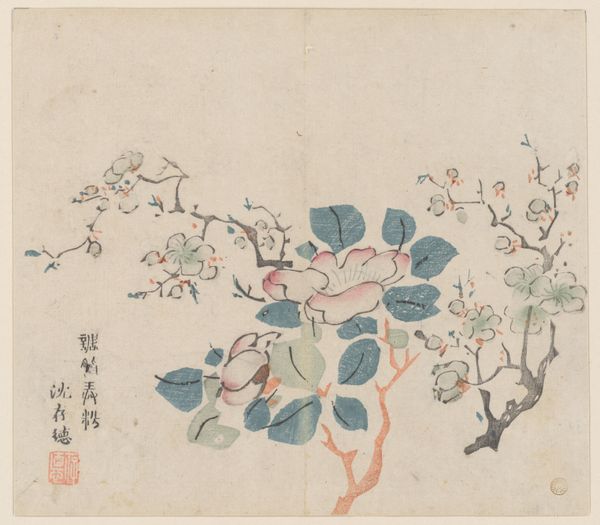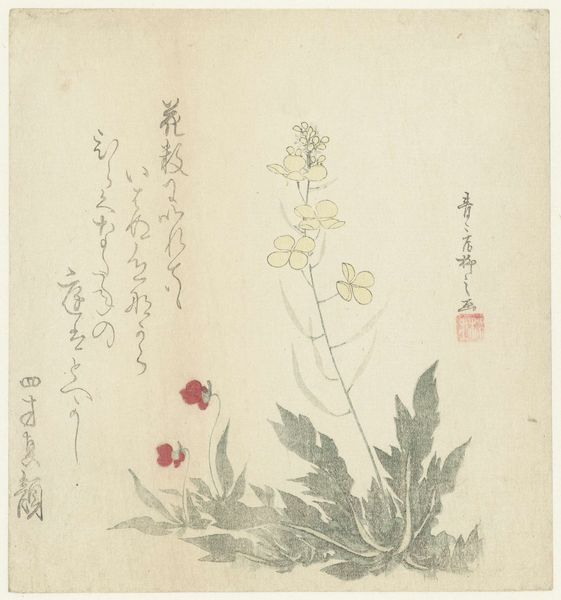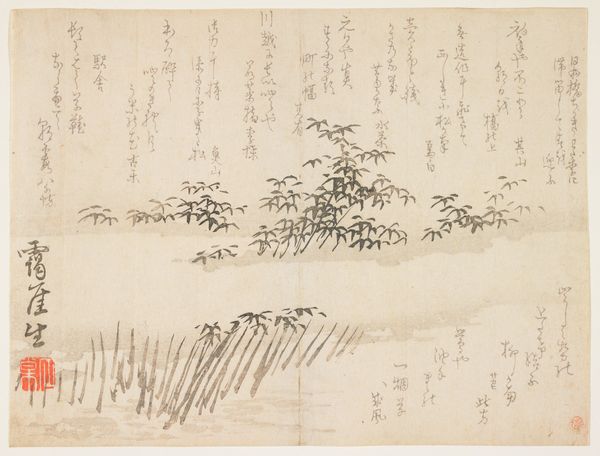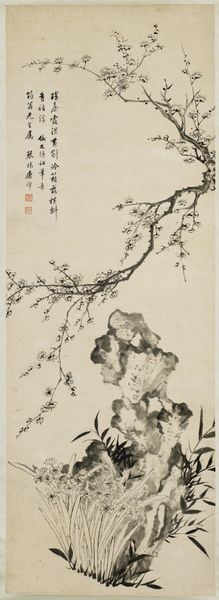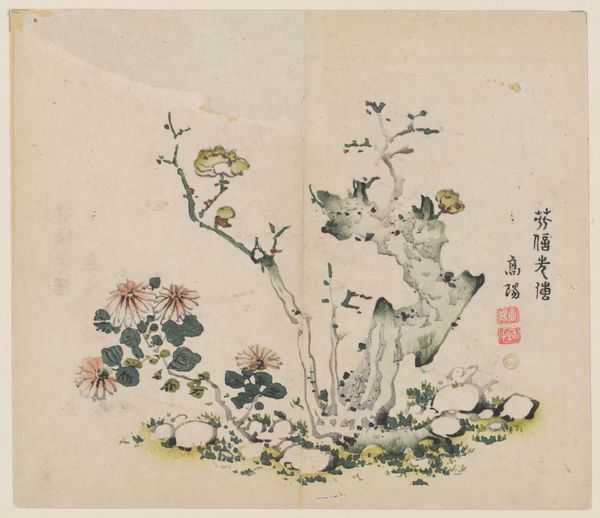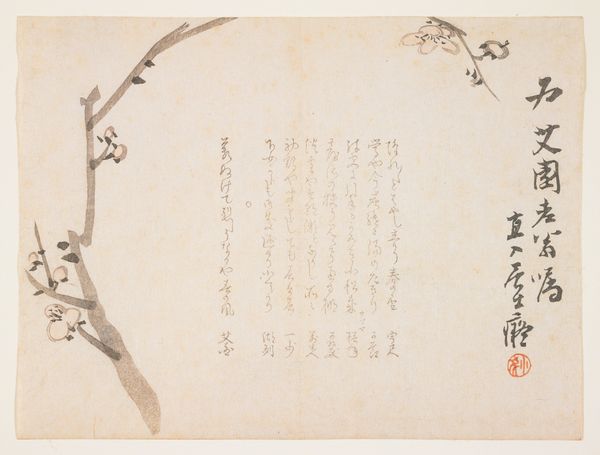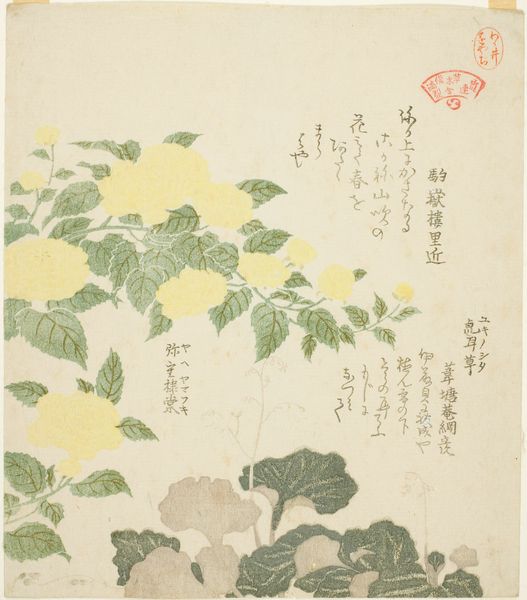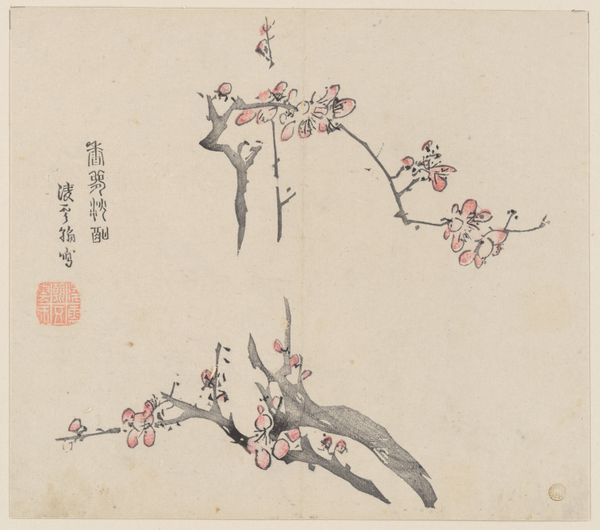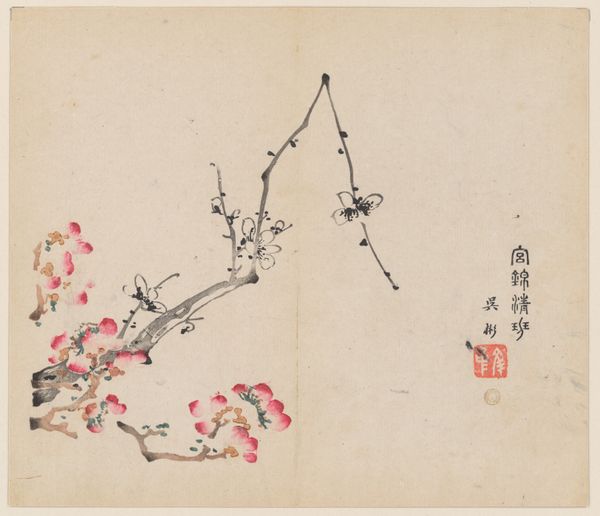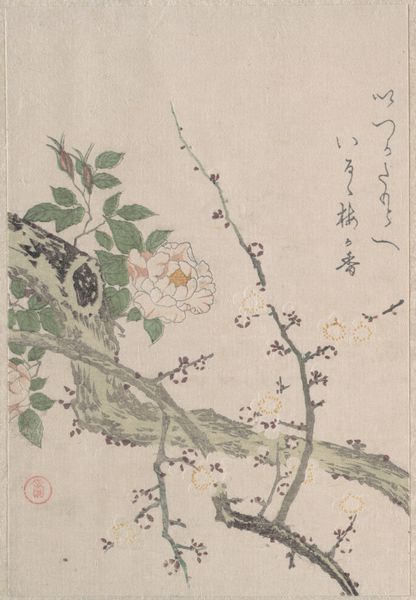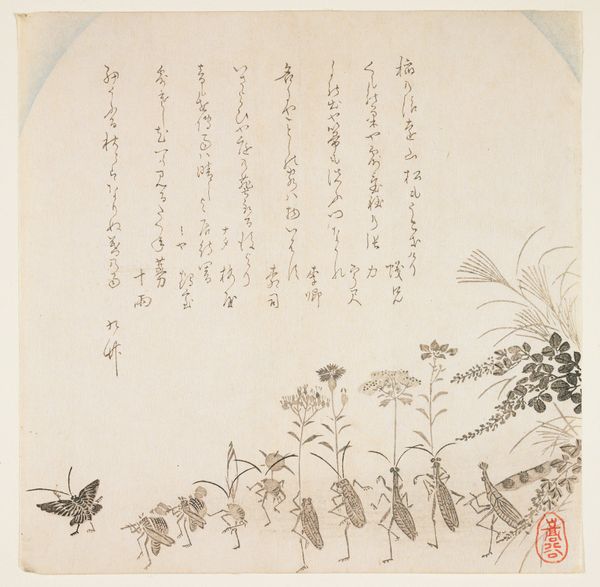
drawing, print, ink, woodblock-print
#
drawing
# print
#
asian-art
#
ukiyo-e
#
ink
#
woodblock-print
#
orientalism
#
line
#
watercolor
Dimensions: 8 3/8 × 3 3/4 in.
Copyright: Public Domain
Editor: Here we have Kitao Shigemasa's "Plum Branch" from the late 18th century, a woodblock print in ink and watercolor. There's something so delicate and ethereal about the pale washes of color, especially combined with the elegant linework. What captures your attention most when you look at it? Curator: It's like a whispered poem, isn't it? For me, it's the starkness juxtaposed with that quiet beauty. Look how Shigemasa uses empty space – that's not emptiness, but a vital part of the composition, suggesting infinite potential, like a held breath before the blossom fully opens. It invites introspection, don’t you think? Editor: I do. It almost feels like you could meditate on this piece, and new details would keep revealing themselves. There's a certain discipline in how little is there. Curator: Exactly! And notice the calligraphy. It's more than just text, it's part of the art – dancing across the surface like another branch. How does that text resonate with you? Editor: Honestly, I can't read it. But even without understanding the words, it feels like an essential part of the balance, both visually and conceptually. Curator: You've nailed it! Consider that in Ukiyo-e, the poetry, the image, and the viewer create a unified experience. It becomes less about *seeing* and more about *feeling* the essence of the plum in bloom, ephemeral, poignant, beautiful. The text and image are equally important. The experience that we gain from this piece is about appreciating nature and living in the moment. Editor: That’s a fascinating insight. I never considered the text beyond its aesthetic. Thank you for shedding some light. Curator: And thank you, for reminding me that sometimes, simply *feeling* the art is more profound than analyzing it.
Comments
No comments
Be the first to comment and join the conversation on the ultimate creative platform.
